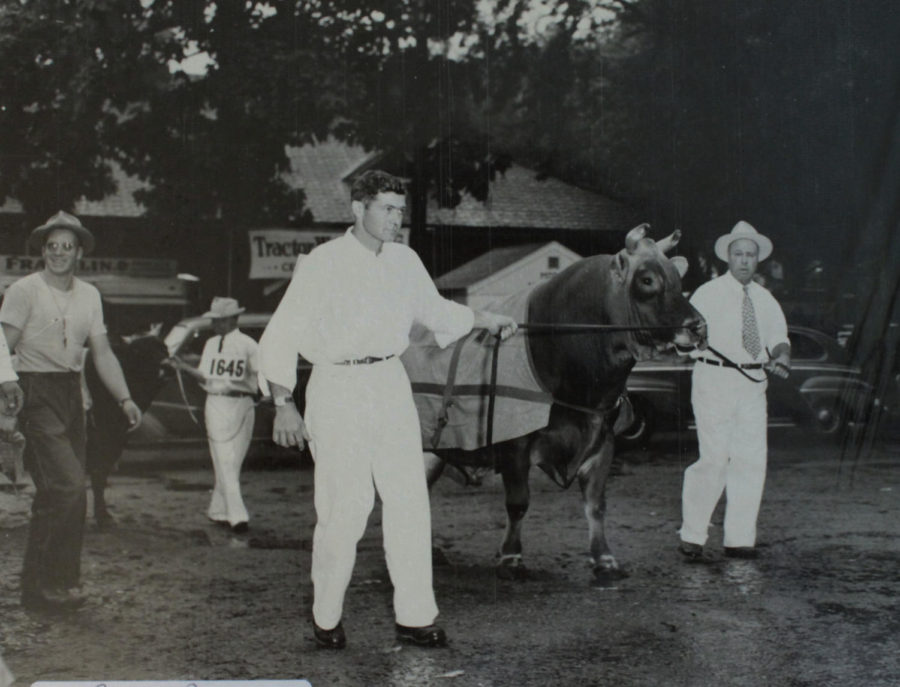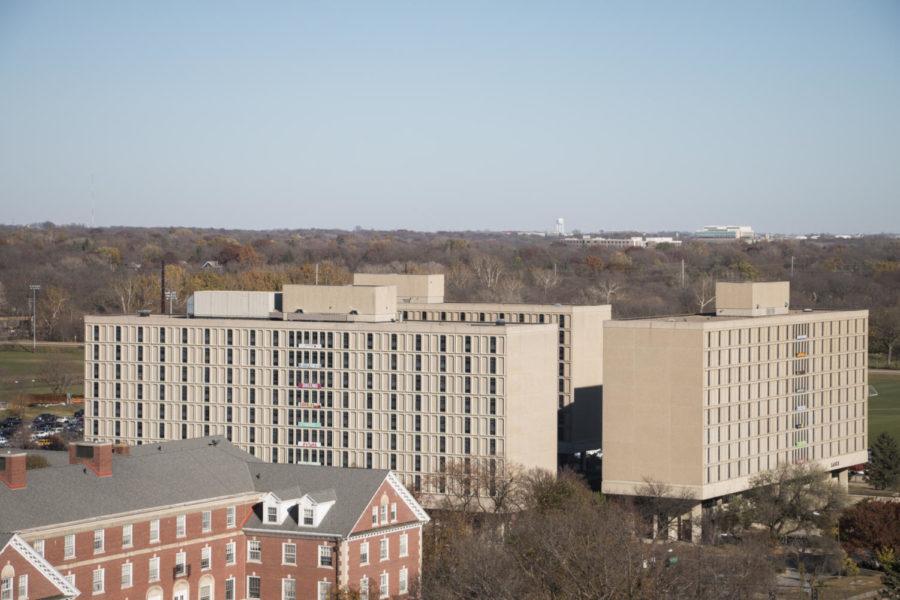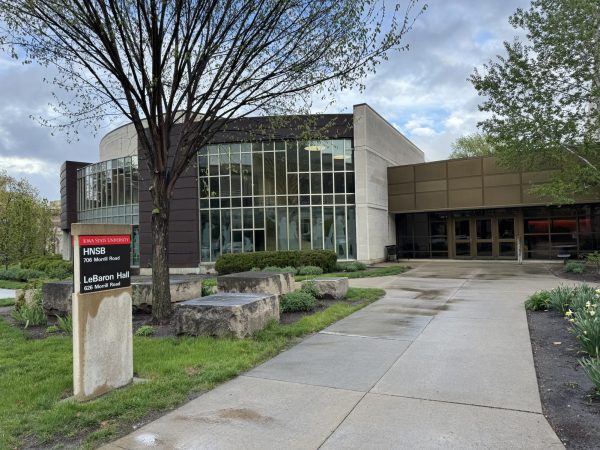Dairy farmer shares his history
June 20, 2013
Clifford Sams’ Iowa State adventure lasted him only three months, but set him on his way to a career that would last him the rest of his life.
Sams attended the university shortly after graduating high school in 1940. At the time, Iowa State was offering “herdsman’s courses” in the late winter months, when the farmers were not so busy.
The Sams family had been in the cattle business since 1920, the year Clifford was born, and dairy was exactly what he came to Iowa State to learn more about.
“I just wanted to get a better education,” Sams said on June 7, at the ISU Dairy Farm open house.
The herdsman’s courses taught about more than just farming, and included courses in English and other departments. Many of his classes took place at the ISU Dairy Farm. Shortly after beginning his coursework, he was hired there.
“I thought I was pretty special to get to work at the dairy farm,” Sams said.
Initially, his job was to curry the cows and clean them before milking, but later he was hired as a general farm worker.
“I would get up at 2:30 [a.m.] and I’d walk a mile and a half out to the dairy farm and work from 3:00 until 7:00 [a.m.] ,” Sams said. “I would go out there and work for four hours, then I’d walk back and eat breakfast and go to school during the day. Then the next morning, I’d do it again. When school was over, they hired me to work full time at the farm.”
While working on the farm, Sams lived in a boarding house. Another family cooked for all the employees. They ate mostly what was grown in the garden, but Sams remembered, “Those ladies made good cakes and pies.”
The dairy farm was a demanding workplace. Employees worked roughly 12 hour days and were given only one day off in a month.
“I got paid $65 a month, but I got charged $32 a month for board and room,” Sams said. “I still had 30 or 31 dollars left, and if you figure that at 12, 13 hours a day, it amounts to about 8 cents an hour for your labor.”
But this was good for unskilled labor, Sams said.
“I’m sure I got paid as much as anyone else.”
By the end of the summer, Sams had saved up enough money to buy a bicycle.
Sams said he never expected to go to college. He had grown up as one of six boys in the lap lands of southern Iowa, where he went to school in a one-room schoolhouse and worked hard on his family’s farm. He described his childhood as a different world.
“It’s so different,” Sams said. “Things have changed so much and young people just can’t even imagine what it was like before we had toilet paper, before we had indoor bathrooms, before we had running water, before we had central heat, before we had electricity.
“In the evening, when it got dark, the only thing you had was kerosene or a lamp and so you went to bed early,” Sams said. “You got up early because when it got light you could see. You went barefooted because you couldn’t afford shoes.”
Sams was barely a teenager when the Great Depression hit the nation.
“That’s when we picked up corn cobs out of the hog lot to use in the cook stove to cook food,” Sams said.
There was moisture in the spring of 1934. Crops began growing, but as the season went on, they would cook and dry up.
“It never rained,” Sams said. “The ground just got drier and drier, and so the dust just blew because there was nothing to keep it from blowing. And then those chinch bugs and grasshoppers ate the crop off of the ground, so the ground … was open and the wind would just blow it.”
If the Sams family had lived modestly before, the depression pushed them to extremes. Temperatures rose to 110 degrees and they had no air-conditioning or running water. It was so hot, not even dew would set in the morning.
The family owned a farm on 120 acres of land in Clarke County. Before the Depression, they had grown oats, corn, hay and had plenty of livestock.
Once the heat of the Dust Bowl hit, they would sleep in their yard every night.
“At least outside you’d get a little breeze,” Sams said.
The family’s livestock fared better than most; they didn’t lose many.
“A lot of people’s livestock just starved to death,” Sams said. “We chopped down willow trees to let the horses and cattle eat the leaves and the small stems, because there wasn’t anything else to eat.”
Sams said the climate was devastating. While people around them got in their cars and left, the Sams family pulled through.
“We knew we’d survive somehow,” Sams said.
Sams worked at the ISU Dairy Farm for a year and a half before he was picked up by the Chicago Guernsey Farm, where he continued milking cattle to supply dairy to Chicago restaurants and hotels. In 1943, he was drafted into the military.
Sams spent three years in the service, and fought in Italy during World War II.
“I was in the infantry. The infantry was not a very good branch of the service to be in,” Sams said. “I got selected after basic training to stay and be an instructor for about a year and a half. And then I went overseas, and went up on the front lines, and we had 365 percent casualties in nine months in our division.”
Sams explained what the 365 percent turnover rate meant, and how severe it really was.
“A platoon is 42 people, originally. That’s what you have in basic training, and so you’d go in combat with 40 people,” Sams said. “You lost 40 people and you lost 40 people and you lost 40 people and a half of 40 people. But you’d keep getting replacements coming in.
“You’d lose 10, you’d lose 15, you’d lose 5, you know, get killed, they’d bring in some more. So you got replacements. You’d keep getting replacements, but you’d keep losing people. That’s terrible. You can’t imagine.”
Sams compared service involvement in World War II to today, emphasizing that conditions are much better now. In his time overseas, he would only hear from his family once every six to eight months, and that was through a letter.
Time in the service was lonely. In the first place, Sams said, “You never thought you’d ever come home.” But more than that, “You never had close friends because you never had them long enough to get to be a close friend.”
By 1945, Sams was home and his family had saved up enough money to purchase 240 acres in Beaman, Iowa. He is still on the same property with his wife of more than 50 years, Wilma Sams, today.
Sams still reflected on his time at Iowa State fondly.
“My second brother, he got a job right after he and I went to Ames together for that herdsman’s course,” Sams said. “But he got a job as a cow tester… and I got hired to work at the [Chicago] dairy farm. But both of those jobs was instigated because we went to that school.”

















